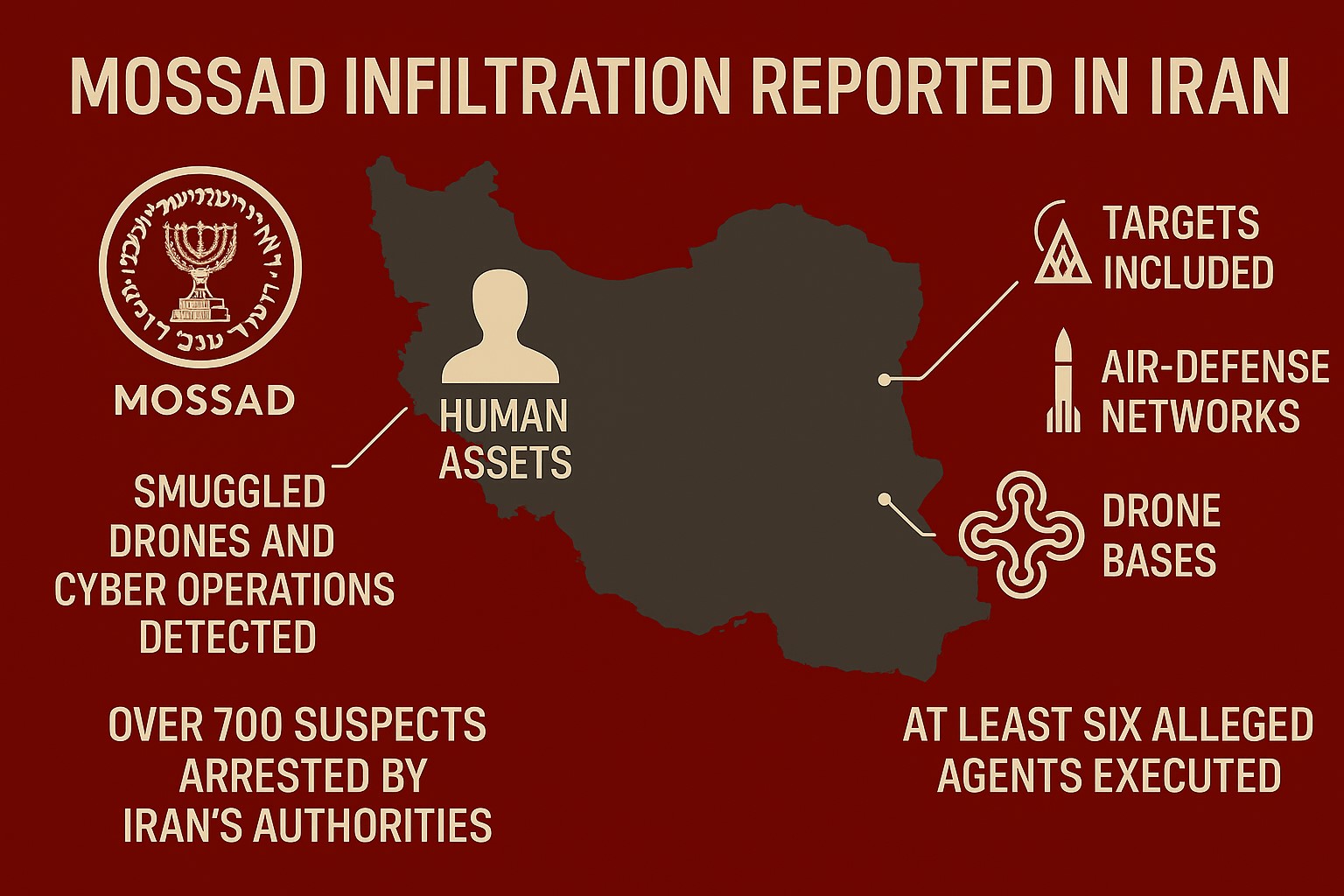Israel’s Mossad has penetrated some of the deepest layers of Iran’s security apparatus, exposing critical vulnerabilities in air-defence networks, missile systems, and drone operations, according to Iranian officials and independent analysts tracking the fallout.
Iranian authorities have acknowledged that Mossad operatives and local recruits managed to breach tightly guarded military installations, gather intelligence on weapons deployments, and coordinate sabotage missions, dramatically undermining Tehran’s deterrence posture during the latest confrontation with Israel.
Iran’s security agencies, reeling from the extent of the breaches, have launched an unprecedented nationwide crackdown on suspected collaborators, arresting more than 700 individuals and purging dozens of security officials accused of negligence or complicity. They describe the infiltration as a complex mix of human intelligence networks, smuggled drones, and cyber-enabled sabotage, with agents reportedly gaining access to classified operational data and even influencing local military logistics.
In the aftermath of these revelations, Iran’s judiciary confirmed the execution of at least six alleged Mossad-linked spies, following what it called fast-tracked trials justified under wartime emergency measures. Human rights groups have voiced concern that many of those arrested may have been coerced into confessions, warning of potential abuses in a climate of fear and high political tension.

Mossad, which officially never comments on covert missions, has remained silent, but Israeli military sources have signalled that these operations form part of a long-running effort to blunt Iran’s growing missile and drone capabilities. By infiltrating the Iranian military from within, Mossad has reportedly been able to target missile launchers, air-defence radars, and supply depots, sowing confusion and slowing Iran’s response capacity during Israeli air or cyber strikes.
Security analysts believe Mossad’s methods rely on recruiting insiders through ideological sympathy, financial incentives, or family leverage, then combining these human networks with cyber sabotage and precision drone warfare. The strategy fits into Israel’s broader doctrine of “preemptive shadow war” to keep Iran off balance while avoiding direct conventional battles.
Beyond Iran, Mossad has pursued similar infiltration tactics in Syria, Lebanon, Iraq, and Gaza, cooperating with allied Gulf states to disrupt Iranian-backed militias and arms networks. The scale of Mossad’s penetration inside Iran, however, represents a new level of ambition and success, challenging Tehran’s counterintelligence systems and heightening fears of further security breaches.
As Iran scrambles to restore confidence in its security establishment, its harsh reprisals and sweeping arrests suggest both an urgent effort to plug intelligence leaks and a message meant to deter further collaboration. Analysts warn, however, that Mossad’s highly adaptive infiltration networks may prove difficult to dismantle fully, leaving Iran exposed to future covert operations in a deepening regional espionage war.


